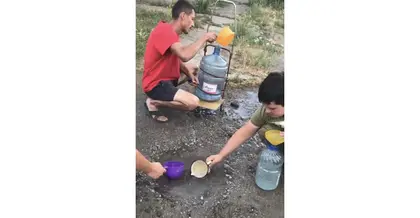According to Petro Andryushchenko, advisor to the Mayor of Mariupol, Vadym Boychenko, drinking water remains the number one problem in Mariupol.
Russian occupiers have connected only 502 houses, including private ones, to the water supply. It means just 1.35% of all homes have access to water, which is around 5% of the city’s current population.
JOIN US ON TELEGRAM
Follow our coverage of the war on the @Kyivpost_official.
Water is simply unavailable, even low-quality water.
A total of 2,280 apartment buildings and 48,000 private houses (50,280 in total) are registered in Mariupol. More than 40% of the city’s 1,368 high-rise buildings have been damaged, as have 12,000 private homes.
These numbers prove that the problem of drinking water and any other kind of water remains the number one problem for Mariupol’s residents.
According to the Ukrainian authorities, around 22,000 Mariupol residents have died since the beginning of Russia’s large-scale invasion. Mayor Vadym Boychenko, is sure that by the end of 2022 at least 10,000 Mariupol residents will die from unsanitary conditions and diseases.
“The occupiers have turned Mariupol into a medieval ghetto. The death rate will be appropriate. Without medicine and medical assistance, restoration of the water supply, and proper sewerage, epidemics will break out in the city,” he said.
Evacuation of Mariupol’s citizens is possible only after meticulous checks at checkpoints by occupying Russian forces. Ukrainians are interrogated, their fingerprints are taken, the contents of their phones are checked, and they are asked to undress and show any tattoos.
Those who did not pass such “filtration” are sent to special camps in the occupied territories of Donetsk Region. It is usually young men, whom Russian occupation forces suspect of belonging to Ukrainian security forces, who end up there.
You can also highlight the text and press Ctrl + Enter



